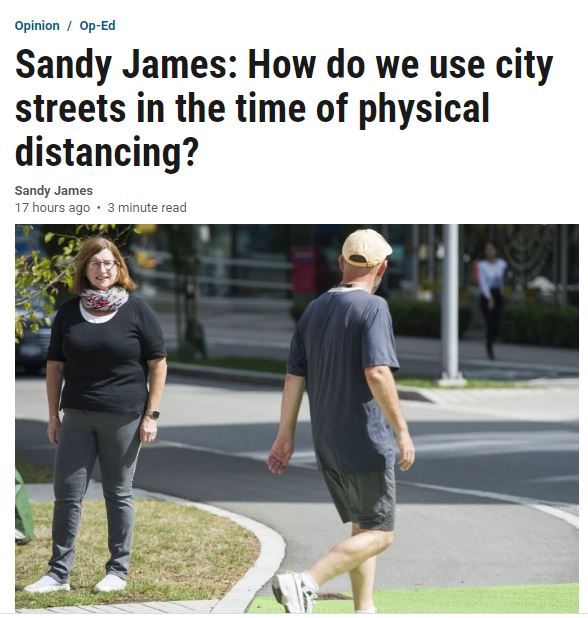I’m on the sixth day of a two-week quarantine after returning from Australia, and, though well-supported by friends and neighbours, I can appreciate the toll that isolation will take – and I’m one of the fortunate ones. Those more at risk because of mental illness, those impacted by job loss, parents caring for at-risk children, all of us dealing with the fear and reality of sickness and death … these stressors will only become more intense in coming weeks.
Sandro Galea, who studied the impacts of quarantine during the SARS epidemic in Toronto, says isolation can contribute to a range of mental disorders like anxiety and depression, but can also trigger heavier consumption of drugs and alcohol, and even post-traumatic stress disorder.
“We humans are ultimately social. We’re social creatures and we do need interaction — physical and social — with others.
Physical distancing orders will remain in place until at least May. So how are we to achieve both separation and interaction? When will we begin to take the first steps towards a safe return to a more normal life. How, simply, will we find a way to move about, to exercise, to share urban spaces with others.
Sandy James knows how.
(But) the standard for new sidewalks varies from 1.2 metres wide to 1.8 metres wide and does not offer enough space for two people to pass each other safely.
One way to offer more space for walkers on downtown commercial streets is to allow pedestrians and rollers to spill into the adjacent metered parking lanes, narrowing the portion of the road surface for vehicles to only two lanes.
Vancouver has over decades repriorized, repurposed and rebuilt urban space for pedestrian and cycling priority, from Seaside to Central Valley, from Hornby to Arbutus. And it has a long-standing plan to do more.
Sandy:
The thinking behind prioritizing walking on connected streets throughout the city has already been done in Vancouver, where 25 years ago the Urban Landscape Taskforce, which included several landscape architects, came up with the ambitious Greenways Plan.
What they termed “greenways” are actually a network of linked, traffic-calmed “green streets.” There are 140 kilometres of greenways, with a network of 14 city greenways that go boundary to boundary in Vancouver.
Here is the Greenways plan as of 2011:
Probably most municipalities in Metro have their own version of this, or at least a vision of what they’d like. Even the predecessor to Metro Vancouver had a plan for the region back in the early 1990s:

In this time of previously unimaginable disruption and response, here’s a modest proposal:
Use these greenway plans to repurpose road space, over the complete network, across the city at once. Start doing it now. Proclaim that every neighbourhood will have a greenway that connects to every other part of the city. A place where people can both gather and keep separate, because there’s enough space to accommodate each other safely. And even a few cars. Each has a name, like Adanac, and each is part of something bigger.
Explain to us how to use the system safely. (We’re more than ready for instructions and guidance on how to get outside, what to do and where to go.)
The greenway system already exists. Let’s use it well in a time of need. Let’s advance by decades what we’ve been aiming for. Let’s start making moves towards the next stage in this pandemic.
It will be so good for our physical and mental health.
















Sandy and Gord – thanks for promoting this great idea. It makes so much sense to build on the existing system and network and think about not just using it now for our need for “more space” but also for how we are going to emerge into the “new city” with “new transportation priorities” that result from the probable continuing need for space between us.
Sandy – thanks for your continuing promotion of walkability and the greenways system. I was compelled to go back to the Urban Landscape Task Force report of 1992 and the “Principles for Decision-Making” that we wanted Council to embed into their governance practice. Many of the principles are relevant today to your idea of expanding the greenway system to meet our current needs.
For example, 1.4 Make connections: Access and connections to nature, parks, and special sacred and civic spaces should be available to all citizens in work, play and learning Provide opportunities to experience the richness of detail on foot, by bicycle, by wheelchair or by public transit. Or 1.6 Encourage innovation: The urban landscape is in a constant state of change, and people need help to understand this. Provide for flexibility and innovation in the planning and design of the urban landscape; let the unplanned happen occasionally. Or 1.7 Be fair and equitable: Equity is geographic, demographic and inter-generational. Provide everyone with fair opportunities to access and enjoy different types, sizes and experiences of open space.
This Price-Tags piece has motivated me to write to the Mayor and to our planners, landscape architects and engineers to hopefully encourage them to move quickly on this idea. The 37th Avenue greenway would be a sensible place to start – at least I think so! But we need action quickly because spring is soon to be truly upon us and people will want to be safely outside in the accessible urban landscape!
Again, many thanks. Moura